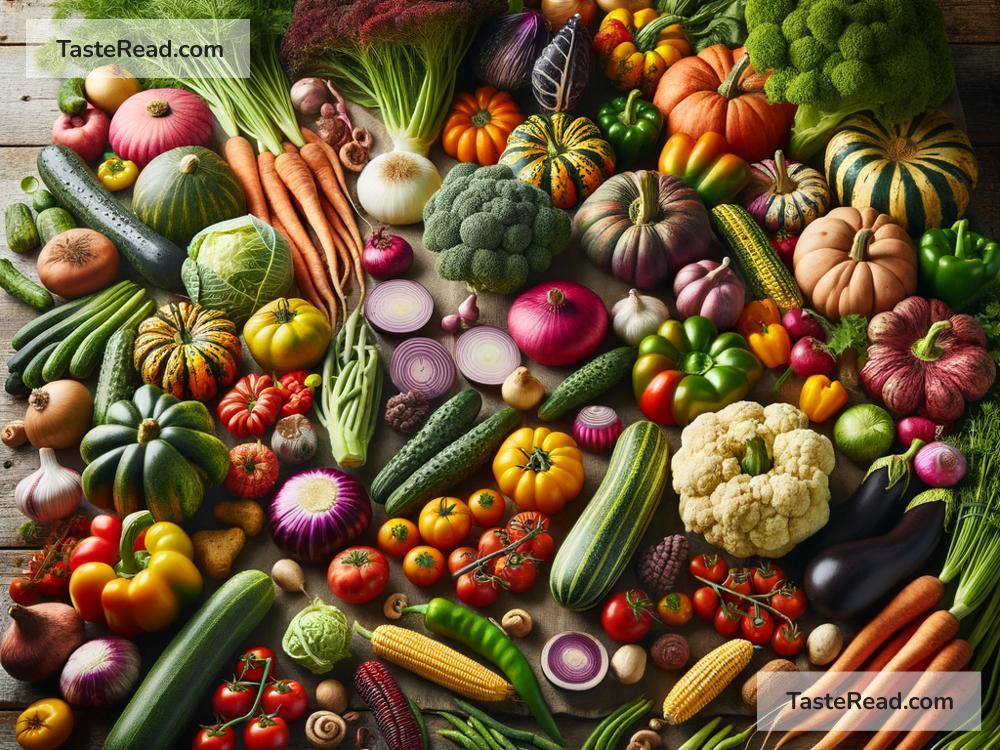Rediscovering Old Flavors: Cooking with Heirloom Vegetables
In our fast-paced world, where instant meals and convenient food options seem to dominate, it’s easy to forget the treasures hidden in our past. One such treasure is heirloom vegetables – the veggie equivalent of a precious family heirloom that has been passed down through generations. Cooking with these old-world gems is not just an act of preparing food; it’s a journey back in time, discovering flavors and textures that many of us have never experienced. Let’s dive into the world of heirloom vegetables and explore how we can reintroduce these ancient flavors into our modern kitchens.
What Are Heirloom Vegetables?
Heirloom vegetables are old varieties of veggies that have been cultivated and passed down through generations, often for 50 years or more. They are the antiques of the vegetable world, prized for their unique flavors, colors, and shapes, much unlike the more uniform, but often less tasty, veggies we see in supermarkets today. These vegetables are grown from seeds that have been saved and shared from one generation to the next, preserving their genetic integrity and distinctive characteristics.
The Appeal of Heirloom Vegetables
The charm of heirloom vegetables lies in their diversity and rich flavors. Imagine biting into a tomato that bursts with flavor, unlike anything you’ve tasted from a store-bought variety, or marveling at the vibrant colors and patterns of beans and corns that seem almost too beautiful to eat. Heirloom vegetables remind us of the time when food was grown for taste and nutritional value, not just for its ability to travel well or look uniform.
How to Cook with Heirloom Vegetables
Start with Quality Ingredients
The first step to cooking with heirloom vegetables is to find them. Check out local farmers’ markets, join a community-supported agriculture (CSA) program, or look for specialty stores that focus on organic and heirloom produce. You might even consider growing your own, as heirloom seeds are readily available online and come with the added joy of nurturing your food from seed to plate.
Simple is Best
When you have ingredients as flavorful as heirloom vegetables, the best way to cook them is often the simplest. Let the vegetables be the star of the show. A simple roast with olive oil, salt, and pepper can elevate the natural tastes of heirloom carrots, potatoes, or squash. Fresh heirloom tomatoes can be transformed into a stunning salad with just a drizzle of balsamic vinegar and a sprinkle of sea salt.
Experiment with Old Recipes
Heirloom vegetables invite you to explore old cookbooks or traditional family recipes. These vegetables were once the staples of our ancestors’ diets, so what better way to honor their history than by preparing them in traditional ways? Whether it’s a rustic vegetable stew or an ancient grain salad, use heirloom vegetables to connect with culinary traditions that have been passed down through generations.
Preserve the Bounty
One of the beautiful aspects of cooking with heirloom vegetables is the opportunity to save seeds and preserve these unique varieties for future generations. Additionally, you can preserve the vegetables themselves through canning, pickling, or drying, ensuring you have a taste of summer even in the colder months.
The Benefits of Cooking with Heirloom Vegetables
Besides the joy of discovering new flavors and adding a splash of color to your dishes, cooking with heirloom vegetables has broader benefits. It supports biodiversity, helping to maintain a wide variety of species in our food system. It also encourages sustainable farming practices, as many heirloom varieties are adapted to local conditions and require fewer chemical inputs.
Moreover, by choosing heirloom vegetables, you’re often supporting small farmers and contributing to a food economy that values quality, taste, and environmental stewardship over mass production and uniformity.
Embracing the Old to Create Something New
Cooking with heirloom vegetables is about more than just eating; it’s about experiencing history, celebrating diversity, and taking an active role in preserving our culinary heritage. It’s an invitation to slow down and savor the flavors that once delighted our ancestors, creating new memories and traditions along the way.
So next time you’re planning a meal, why not reach for that oddly shaped, vibrantly colored heirloom vegetable? It may just lead you on a culinary adventure, rediscovering old flavors and creating new favorites for years to come. Rediscover the magic of cooking with heirloom vegetables and bring the richness of the past into your modern kitchen.


